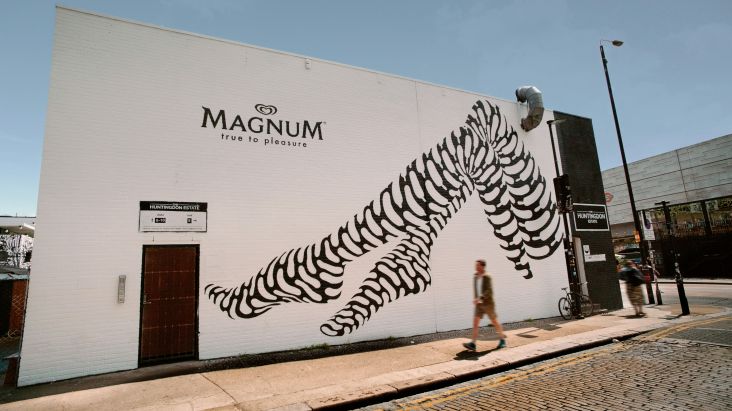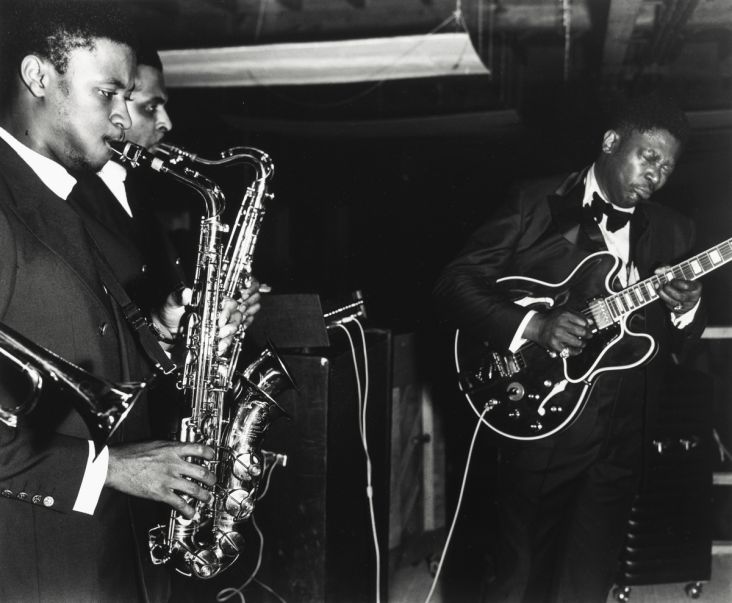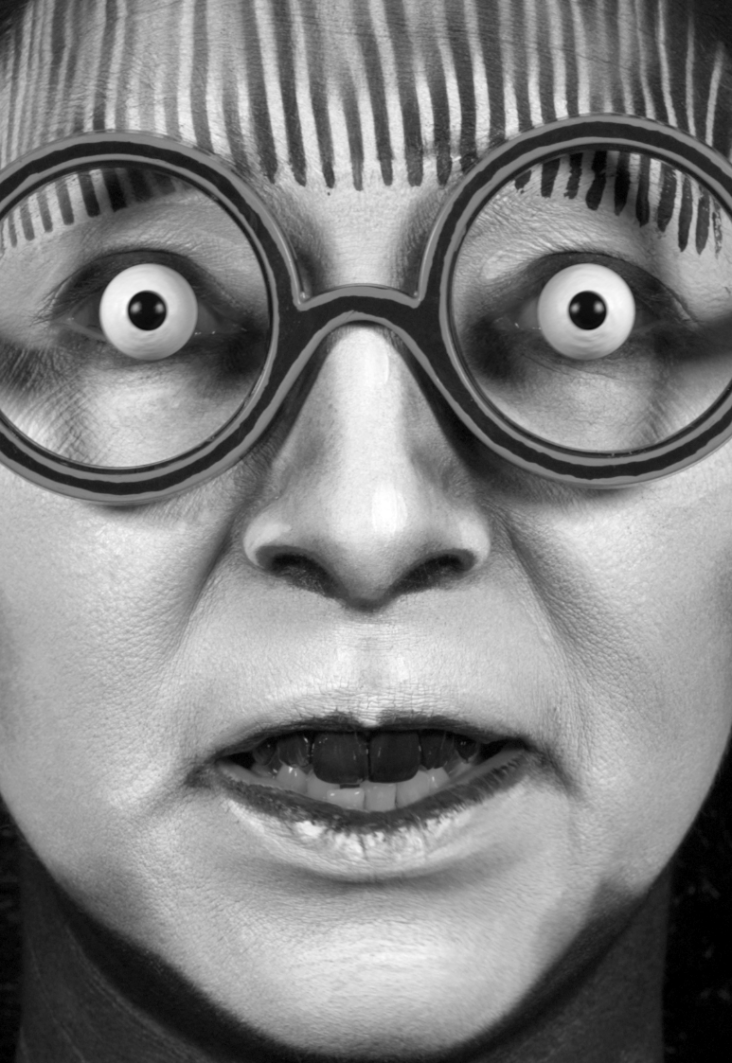The east London outsider artist who channelled her 'spirit possession' into beguiling images
Madge Gill sounds like a fascinating woman, and it’s always a treat to find out about a woman who transformed traumatic circumstances into some staggeringly moving outsider art.
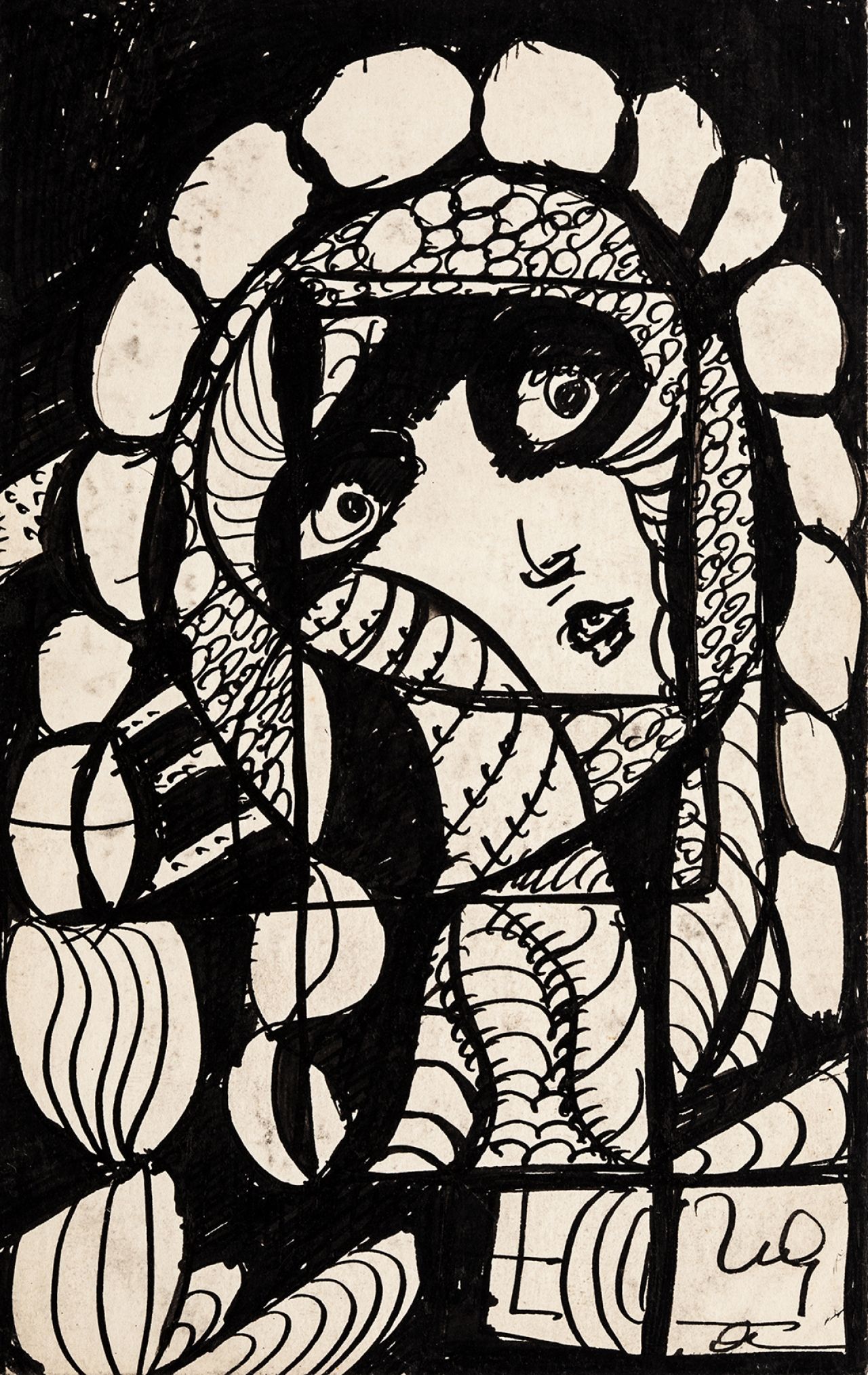
Madge Gill Untitled Black ink on card Plashet Grove, East Ham, London Courtesy Newham Archives and Local Studies Library.
Now seen as an exponent of mediumistic art, Gill was born illegitimately in Walthamstow, east London in 1882—which at the time, meant her family decided to place her in Dr Barnardo’s orphanage in Barkingside.
From there she was enrolled in the British Home Children scheme for orphans and sent to Canada, where she endured hard labour and poor living conditions before saving her earnings and finally returning to London in 1900 to work as a nurse at Whipps Cross hospital in Leyton, near her birthplace. It’s fair to say her life was pretty crap: after she got married, she gave birth to three sons, one of whom died, and a daughter who was stillborn. She then lost the sight in her left eye, and overcome by grief and depression, underwent treatment in Hove for an undiagnosed psychiatric condition.
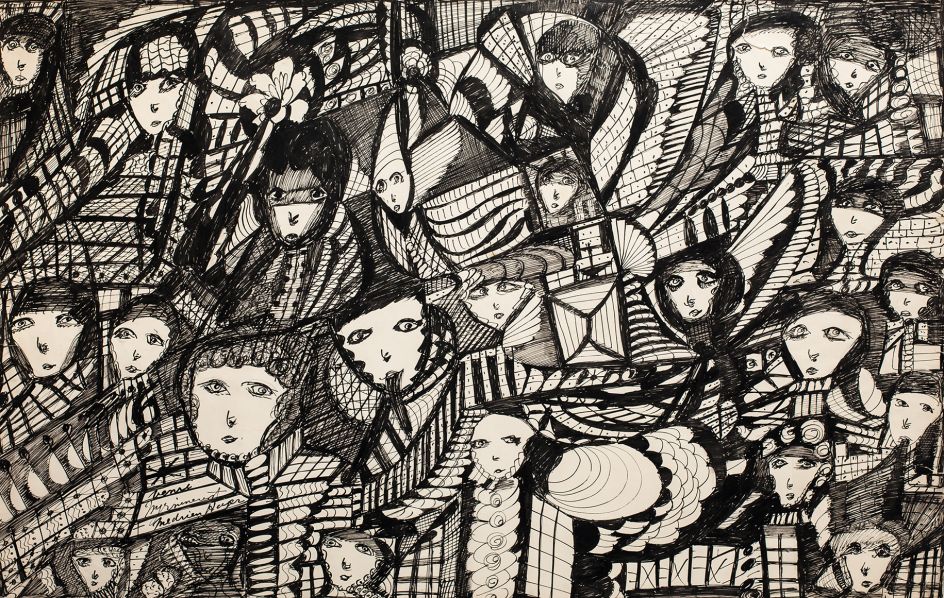
Madge Gill Untitled Undated Black ink on card Courtesy Newham Archives and Local Studies Library
It was under these circumstances that her first “possession” happened in 1920, by a spirit she named Myrninerest. This spirit proved the inspiration for a number of wildly detailed, almost hallucinatory frenetic drawings; trying to capture what she’d seen in her mind with pen and paper.
“Mostly in black and white, Gill’s drawings often feature a girl’s face or figure surrounded by repetitive patterns of broken or swirling lines and checkerboards,” says the William Morris Gallery, which is currently hosting an exhibition of Gill’s work.
Gill worked at night for the most part by candlelight, using rapid mark-making. She could apparently make 50-100 postcards in a single sitting, all of which are imbued with her obsession with spiritualism. As well as her drawings, she also created textile pieces such as embroidered rugs, hangings and dresses.
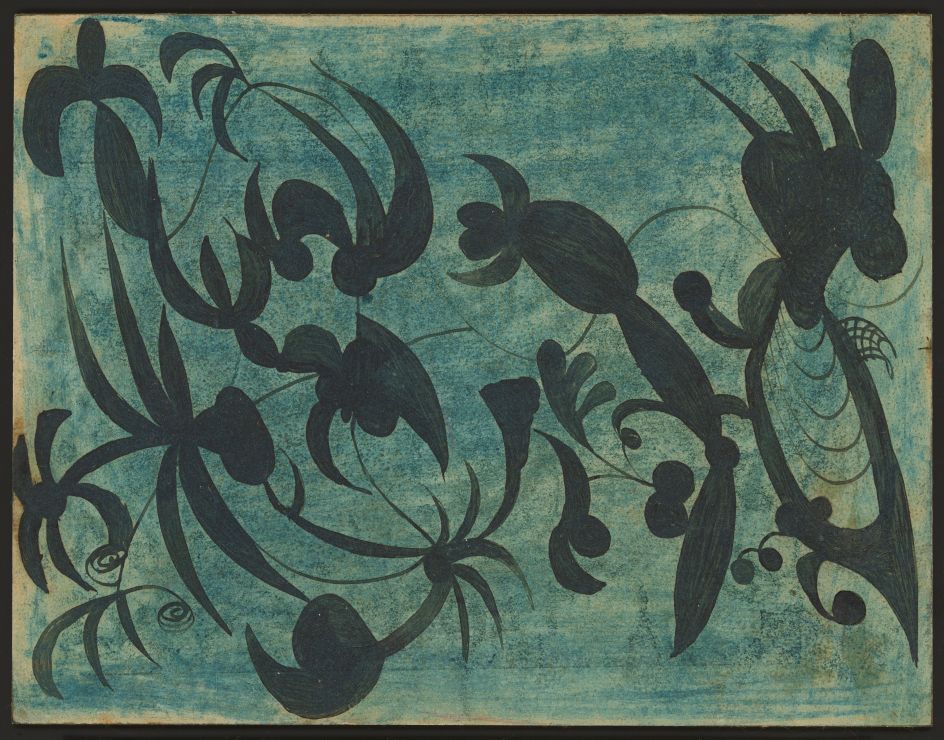
Madge Gill Sans titre s.d. Encre de Chine et crayon de couleur sur carton (Chinese ink and coloured pencil on cardboard) 17.8 x 23 cm Photo by Amélie Blanc, Atelier de numérisation – Lausanne Courtesy Collection de l’Art Brut, Lausanne
When her husband died in the 1930s, Gill was living in Upton Park, east London, caring for her sons. It was during this time she started to become recognised as a great artist, exhibiting several times at Whitechapel Gallery. However, she refused to sell her work —deliberately giving it unaffordable price tags—since she attributed it to Myrninerest. Instead, she “gained a reputation as a spiritual medium and eccentric character in her local neighbourhood,” according to the gallery.
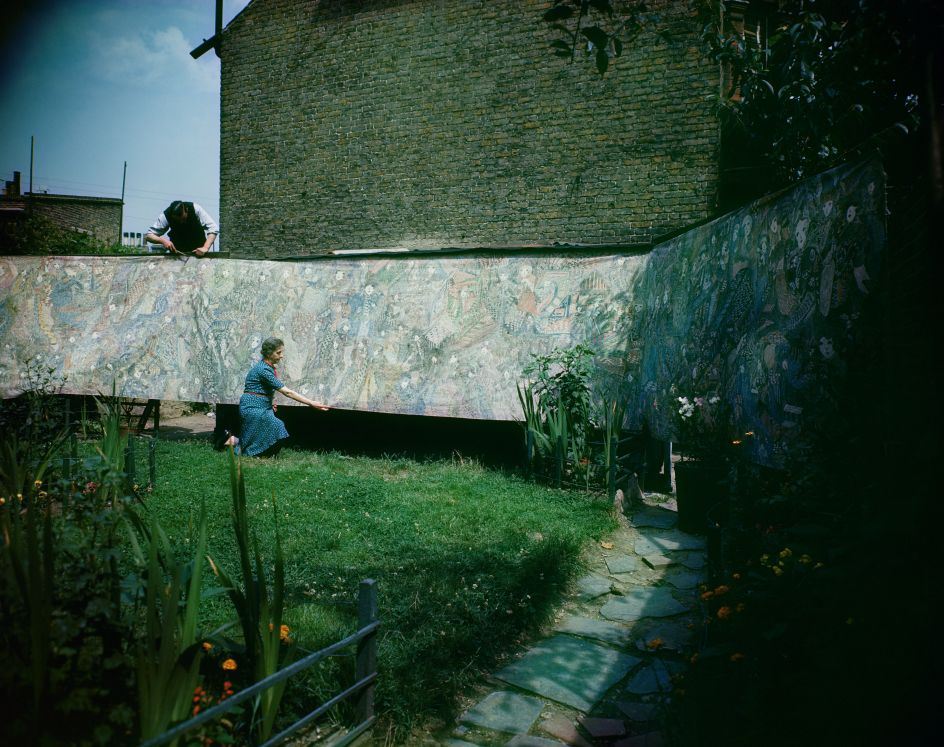
Madge Gill Displays Her Work 1947 Piece in coloured inks on calico 1.8 x 11 m Plashet Grove, East Ham, London Photo by Westwood/Paul Popper/Popperfoto/Getty Images
Following her death in 1961, her artworks reportedly filled her home, piled in cupboards and under her bed. Nearly 2,000 works were donated to Newham Council by her son, and while many of her large scale works are rumoured to have been discarded, more than 2,000 works were sold on through house clearance, private sales and auction and have now been spread across the world.
“Today, Madge Gill is one of the world’s most highly regarded ‘Outsider’ artists, represented in all the major international collections, including Jean Dubuffet’s Collection de l’Art Brut in Lausanne and the L’Aracine Collection at the Musee d’Art Moderne in Lille. Yet the largest collection of her work resides in the place where she is perhaps least known – in East London where she once lived,” says William Morris Gallery.
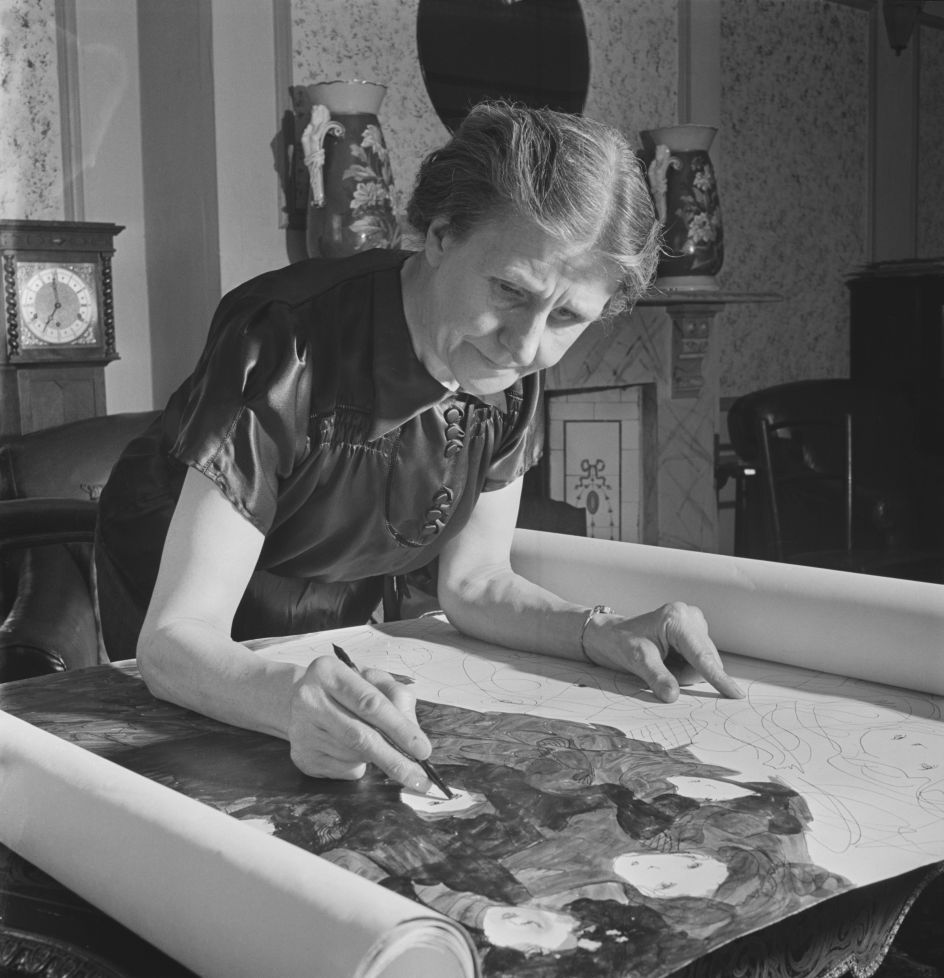
Madge Gill At Work 1947 Photo by Westwood/Paul Popper/Popperfoto/Getty Images
The new show there, co-curated by Sophie Dutton promises to be ”the most comprehensive survey of Gill’s work to date”, including drawings, large-scale embroideries, textiles and archival objects, many of which have never been exhibited before.
The exhibition runs until 22 September 2019 at the William Morris Gallery.




 by Tüpokompanii](https://www.creativeboom.com/upload/articles/58/58684538770fb5b428dc1882f7a732f153500153_732.jpg)


 using <a href="https://www.ohnotype.co/fonts/obviously" target="_blank">Obviously</a> by Oh No Type Co., Art Director, Brand & Creative—Spotify](https://www.creativeboom.com/upload/articles/6e/6ed31eddc26fa563f213fc76d6993dab9231ffe4_732.jpg)








